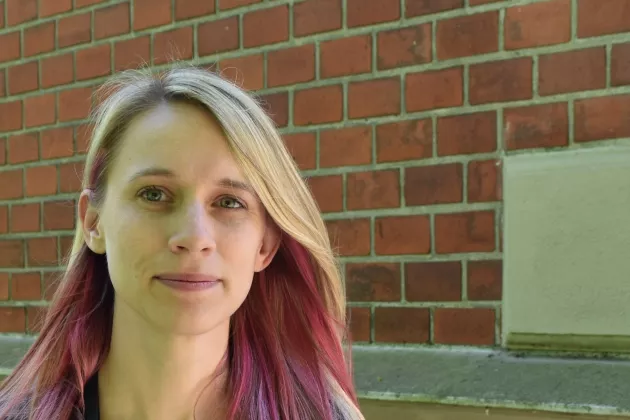The fire season is getting longer every year in California, the fires in the Amazon and Australia are increasing drastically and this summer huge fires took hold of southern Europe. The more extreme and unpredictable fires occur more frequently and are difficult to fight.
The Wildfires in the Anthropocene group at the Pufendorf Institute connects researchers from across Lund University who study fires from different perspectives: climate change, health, environmental safety, fire safety and biodiversity. Together, they want to explore the causes behind and the effects of forest fires. They hope that the photo exhibition, with its beautiful and frightening images, will make the visitors feel something and arouse curiosity.
Forest Fires – An Eye Opener?
We cannot ignore forest fires, says Lina Eklund, researcher at the Department of Physical Geography and Ecosystem Science and the Centre for Advanced Middle Eastern Studies.
– We can see how the damage affects us urgently and maybe it will be an eye opener for us to start more discussions about climate change on earth. Forest fires are here to stay. How do we learn to live with it and what do we need to do to reduce the fires?
Who or what actually starts a fire?
The debate about what causes forest fires is held on several levels. Should researchers rely on hard environmental data or do they also need to research how political and economic systems control and influence the climate?
Political scientist Pinar Dinc, researcher at the Centre for Advanced Middle Eastern Studies, researches relationships between conflicts and fires in the Middle East. Can we find correlations between different levels of conflict and increased occurrences of fires? Analyses of the causes behind conflicts and climate change has received more attention in recent years.
– But it's a bit tricky. Who or what actually starts a fire? Is it the state, is it a marginalized group of people, is it the drought? What we can see is that it is political problems mixed with environmental causes that cause forest fires.
Political Pressure
Lina Eklund specializes in remote sensing, where by looking at satellite images and measurement data she can see what is happening over large land areas over time. A work that she has linked to conflict areas in the Middle East, where political and religious conditions are usually analysed.
– My focus is to see how the landscape, for example farmland, changes over time. My research also shows that when conflicts escalate, and more people die, the number of fires also increases.
Both Lina Eklund and Pinar Dinc note that the deforestation that follows a large fire challenges societies to find new ways of living and puts pressure on politicians to achieve change.
– The more I work in this field, the more I think about how groups - especially marginalized ones - need to resist what is happening on their land, says Pinar Dinc.
With the help of satellite images, Lina Eklund has been able to see fires in the area around Chernobyl since March this year. Fires likely caused by the conflict in the area. The fire can release radioactive particles that remain in the earth after the 1986 nuclear accident.
– What do the fires mean for these dangerous substances that can end up in the atmosphere? Previous fires around Chernobyl have not resulted in the particles being released at a dangerous level, but it is frightening to see fires in this specific area.
Boundless Fires
Fire knows no borders, a forest fire can spread from one country to another. Houses are destroyed, farmland becomes unusable and can result in forced displacement. How do we deal with it, what strategies are needed in each individual country and together internationally? In many countries, there is a lack of centralization, which was clearly noticeable in Sweden during the hot summer of 2018. About 50 fires broke out and to get the situation under control, the EU helped with extinguishing work from, among others, Italy and France. And it is precisely collaboration that Pinar Dinc and Lina Eklund are calling for.
– It is important that we broaden the perspectives also within research and look at political and economic motives that may lie behind fires. But it is frustrating that we researchers produce facts that could be used to improve the world, but politicians do not always want to receive the data, says Pinar Dinc.
Lina Eklund and Pinar Dinc see a future where we learn more about the causes of forest fires and how we fight them, while finding ways to live with these fires to better adapt our societies to a warmer world.
– Ultimately, it is not nature that will be destroyed, it is humanity. Nature will always be the winner, says Pinar Dinc.
Lina Eklund and Pinar Dinc are coordinators for the group Wildfires in the Anthropocene, at the Pufendorf Institute.
The exhibition includes photographs and texts that highlight issues surrounding forest fires studied by the researchers within the Wildfires in the Anthropocene group. The exhibition was shown in the Pufendorf Institute's garden until October 10.






